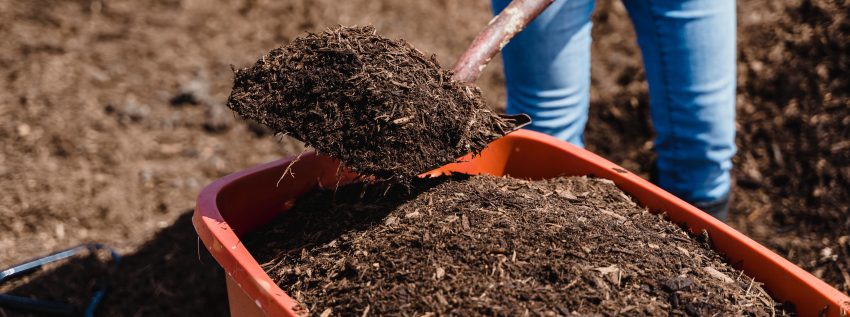Composting is a great way to reduce landfill waste and enhance your soil at the same time. According to the EPA’s 2018 Wasted Food Report, 96% of households’ food waste went to landfills, combustion, and sewer/wastewaters treatment. They estimated that only 3% was composted1. By reducing your food waste, you can not only save money (buying only what you need), but you can also reduce your environmental impact (not wasting the energy and resources that went into bringing that food to you). Preventing food waste includes meal planning and buying only what you need for the week, properly storing food to prevent fast spoilage, and composting.
Why Compost?
By composting food scraps as well as yard waste, you can reduce a significant amount of solid waste you send to landfills. The compost you create can then be used as a soil amendment for both vegetable and flower gardens. Using homemade compost saves you from having to spend money on store bought compost, and saves you the hassle of loading bags of compost or hitching up your trailer to haul it home. You also know exactly what goes into your compost. Compost adds organic matter and nutrients to your garden, and can also suppress disease and pests.
How to Compost
To begin composting, you need a dedicated area. You’ll want to choose a location away from where kids and pets can get it. Your compost pile can be as simple as that, a pile, or you can build a box, buy a barrel, etc. it depends on what works best for you. If you use a pile, you need something to cover it with to help retain heat and moisture (tarp, wood, etc). If your compost pile tends to dry out, it will need to be watered occasionally. The pile also needs to be stirred every couple of weeks to mix in oxygen. We love using our tumbling, two chamber composter. It keeps the compost in a safe place (out of reach of animals and our son), we can keep it close to the kitchen door for convenience, and it’s easy to turn to the mix up the compost.
What to Compost
You’ll want to more carbon materials in your pile than nitrogen, three parts brown to one part green is recommended. Brown materials are carbon-rich and include leaves, sticks, paper, coffee filters/grounds, and dryer lint. When we don’t have reusable shopping bags with us, we will get the brown paper bags and then shred them to add to our compost. Green materials are nitrogen-rich and include food scraps, green yard waste, and tea bags. You can also compost egg shells and hair/fur. If the pile becomes wet and stinks, try turning the pile and adding dry brown materials. If its dry, add more green items and possibly add more cover for insulation.
Things not to compost are meat and dairy (will attract animals), dog or cat waste, any material that has been treated with pesticides, diseased plants, and weeds with seeds.
How often to Apply Compost to Garden and Lawn
You should add up to a couple of inches of compost to your garden at least once a year. You can also add smaller layers of compost throughout the growing season when plants need an extra boost of nutrients (i.e. flowering, fruiting, to replace eroded soil). Adding compost throughout the growing season is more beneficial to vegetable gardens then for flower gardens. Adding compost to your grass even just once a year can be favorable. The ideal time to add compost to your lawn is in the spring with new grass growth. You just need to sprinkle some compost over the grass and rake it in to evenly disperse it.
Sources
- Estimated from U.S. EPA, 2012 Wasted Food Report (PDF), 2020.
